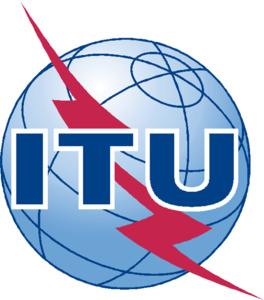Comparisons between the Microsoft Windows, Apple MAC and Linux
computer operating systems have been a long running topic since the
beginning of time.Comparisons of these operating systems tend to reflect
their origins, historic user bases and distribution models.
We will start with a background comparison of the three operating systems.
Windows
Windows is one of the most well known operating systems developed by
Microsoft. About 9 out of 10 homes and businesses currently use at least
one Windows computer. Windows was originally based off of MS-DOS. This
line of Windows OS became known as the 9x series. Eventually, all
subsequent Windows OS’s are based off Windows NT. The most recent WINNT
OS would be Windows 7.
Mac OS X
OS X is an operating system developed by Apple and is currently the
2nd most used OS after Windows. It has less than 20% marketshare. OS X
unlike Windows, is actually based off of Unix. Therefore, OS X is
considered to be part of the Unix OS family like Linux is. In fact, you
can almost consider OS X to be a Linux Distribution.
Linux
Linux is not actually a single OS, but rather several distributions
all based off of the original Unix system. Linux is very popular for
servers but has recently found its way to the desktop. It’s not as
popular as OS X or Windows yet, but it’s popularity is rising. Unlike OS
X or Windows, Linux is free and open source. There are many
distributions of Linux like Ubuntu, OpenSUSE, etc.
 The Myths & Facts About These Platforms
The Myths & Facts About These Platforms
It is generally stated that PCs commonly get viruses but Linux and
Macs do not. That is untrue because OS X is just as vulnerable to
viruses as Windows is. The reason why Windows appear to be more
vulnerable is because it literally has more viruses programmed for it.
But that doesn’t mean the system itself is more vulnerable. Mac OS X
seem to have no viruses targeted at it because hackers don’t think OS X
is worth making viruses for. This is because barely anyone owns a Mac
compared to the number of Windows users out there. Therefore, there’s
not much incentive to program a virus for a Mac. Mac viruses do exist
and can affect a mac system just as much as a Windows virus can affect a
windows system. There is no hack – proof or virus proof system.
Even Linux systems have a few viruses too.
Truth be told, hardening techniques like the one
discussed here makes the Windows platform less susceptible to viruses than it is perceived.
Many people say that OS X never crashes and is the most stable OS ever. The same can now be said about Windows 7.
Truth is, Windows 7 is the most stable Windows Operating systems
ever. OS X can crash just as frequently as a Windows OS. In fact, OS X
crashes even more when you are running non-Apple approved software such
as Adobe Flash or Audacity. Even Steve Jobs admitted that Macs can crash
a lot, despite what his “I’m a Mac” ads have said.
The famous BSOD (Blue Screen of Death) on Windows is a misconception
from older Windows 9x systems. Back during Windows 9x series, stability
was actually an issue. However, the switch to Windows NT systems made
the OS much more stable and Blue Screens are considered quite rare now.
Apple and other Apple fanboys are using the Windows 9x history as an
argument against Windows even though those systems have long been
discontinued and those problems no longer affect modern Windows systems.
As for Linux, it can crash too although it’s much more rare than
WIndows or OS X. When a Linux crashes, it’s called a Kernel Panic.
Normally in a Windows vs Linux comparison, hardware would not be
given much mention, but because Mac OS X locks users to Apple hardware,
this comparison is necessary.
For Windows and Linux, you can choose what you want to install your
OS on. There are tons of options from manufacturers like Dell, HP, Acer,
Gateway, Lenovo, Asus, and so on. For Mac OS X, you only have Apple.
Firstly, using the same hardware specifications, a Windows PC usually
cost much less than an Apple Mac. Probably the deal breaker for most is
that carrying out a hardware upgrade task on a Mac is a near impossible
task, except for the real geeks. This is if you do not mind the fact
that opening up a Mac will void your warranty and violate Apple’s EULA.
Windows OS has the largest software library than any other OS. This
means that the majority of programs, applications, and games out there
are meant for Windows. Productivity Suites like Microsoft Office are
always available on Windows first. That same version will be released on
OS X later on. Many other programs out there are also Windows
exclusive. If you’re into gaming, you’ll need good hardware (see above)
and to play more games, you’ll need Windows. Many PC games today are
meant for PC’s running Windows. There’s a new line of games called Games
For Windows, which is obviously meant for Windows. Many Steam games are
also meant for Windows. Only a few games will work on Macs or Linux.
There’s a common myth that Mac OS X is better and more common for
video editing. This is untrue. Almost all video editing programs are
multi-platform meaning that they work on both Windows and OS X. Linux
may be a less favoured exception.
Programs like Sony Vegas, Adobe Premiere, Autodesk Avid, and so on
all work on both OSes. The only notable video editing program that is OS
X specific is Final Cut Pro. As for application and software
development including game development, Windows is definitely the main
platform. Many programs today are written in programming languages such
as C++, C#, Java, and Visual Basic. While some of those languages work
on OS X and Linux, the newer and more common ones are now for Windows
only such as Visual Basic and C#. Game development for consoles and PC’s
are done primarily on a Windows platform for the same reason as above.
However, it should be mentioned here that a software called
Wine
lets you run Windows software on other operating systems like Linux.
With Wine, you can install and run these applications just like you
would in Windows.
As for server use, Linux accounts for over
60% of server systems. However, Windows is also common for server usage. It depends on preference and the amount of resources someone has.
OS X also has a server edition, however it is not very popular and is
rarely used mainly because of cost issues. Apple software and hardware
tend to be very expensive and overpriced.
So which is the best OS? Well, that really depends on what you want.
Windows is generally recommended for most users who do not have specific
needs. I use
Linux as my main OS but switch with Windows when there is a need for a software not supported on Linux.







